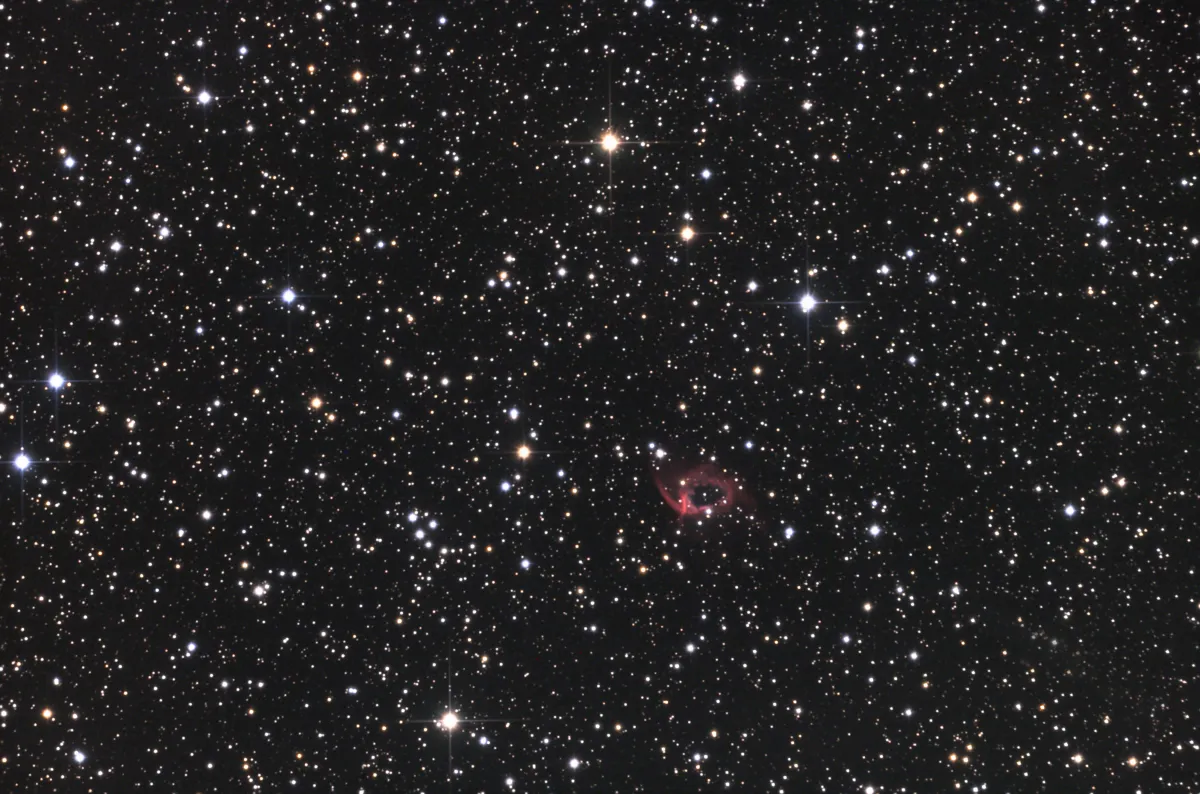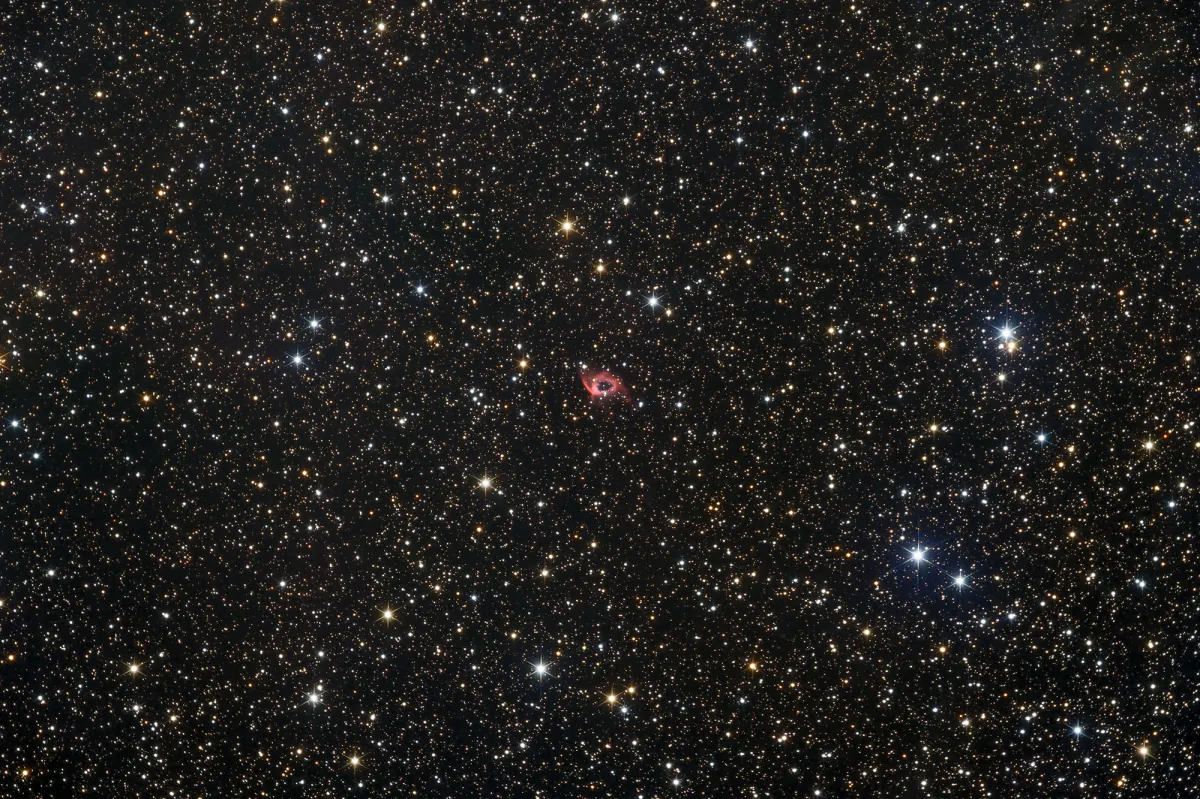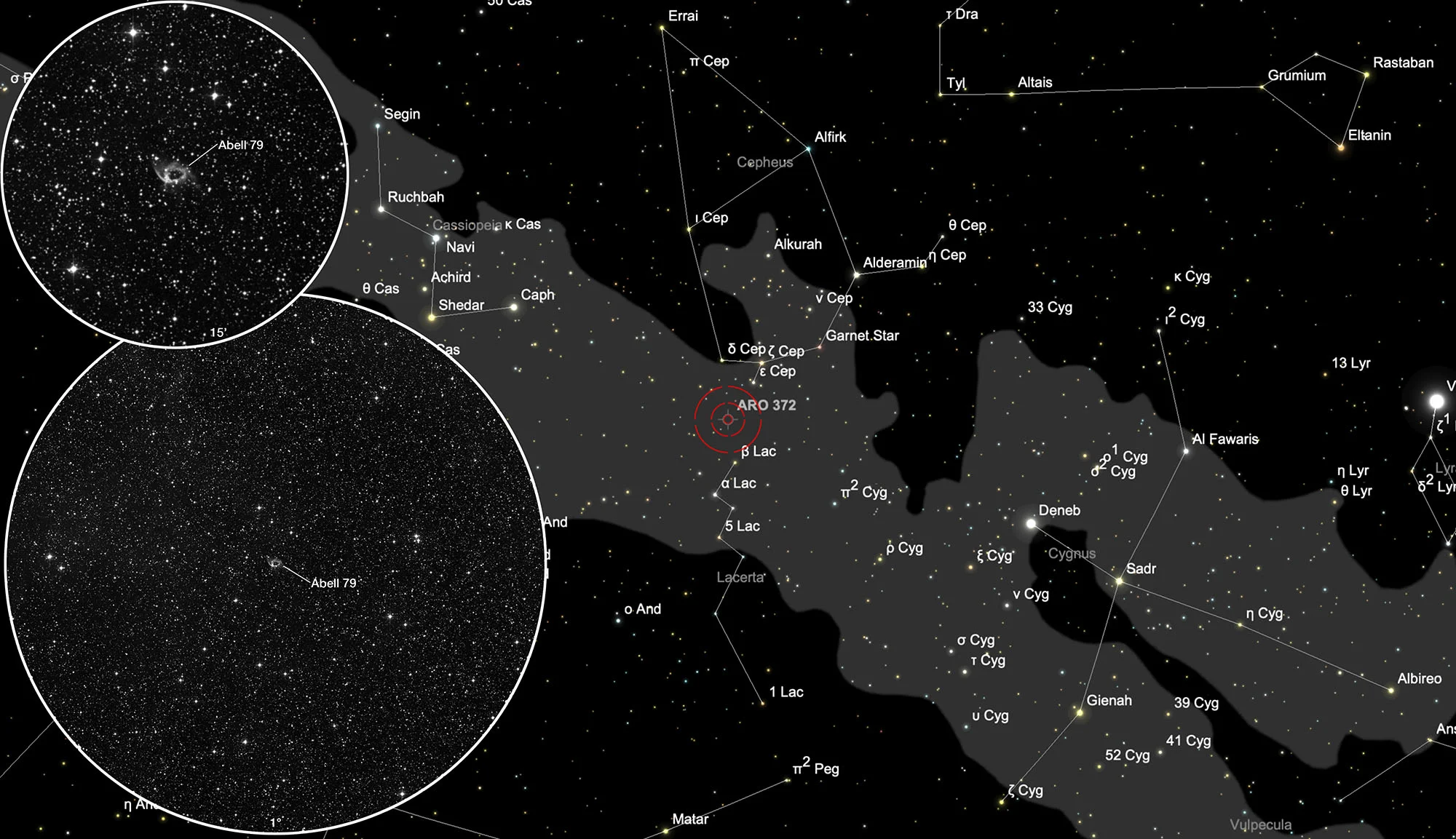Planetary Nebula Abell 79


History
The planetary nebula Abell 79 (PN A55 65, PN A66 79, PK 102-2.1) was discovered in 1955 by the American astronomer George Ogden Abell on the photo plates of the Palomar Observatory Sky Survey (POSS). In 1966 he published a list of a total of 86 planetary nebulae discovered on the POSS photo plates. [331, 332]
Physical Properties
Abell 79 is an unusually shaped planetary nebula. It consists of an irregular and widened oval ring from which weak, oppositely directed lobes emerge, which have almost disappeared in the interstellar medium. A pronounced asymmetry can be seen in the surface brightness of the northern lobe: the northeast side is much brighter than the other. The presumably circular ring is inclined at 49 degrees with the north side in our direction. Strangely enough, the central star is a relatively cool dwarf star that is unable to produce the ionizing radiation visible in its spectrum, which suggests an invisible, hot companion. [207]
The distance to Abell 79 is 1801 parsecs, about 5900 light years. Apparent brightnesses measured in different filters: B 17.8 mag, V: 16.9 mag, R: 16.3 mag, I: 15.7 mag, J: 15.0 mag, H: 14.6 mag, K: 14.4 mag. [145]
| Designations | PN G102.9-02.3: A 79, PK 102-02.1, A55 65, ARO 372, VV' 562 |
| Right Ascension (J2000.0) | 22h 26m 17s |
| Declination (J2000.0) | +54° 49' 41" |
| Dimensions | 54." (optical) |
| Expansion Velocity | 12.5 (O-III) 12.5 (N-II) km/s |
| C-Star Designations | AG82 440 |
| C-Star Magnitude | B: 18.7 |
| Discoverer | ABELL 1955 |
Finder Chart
The planetary nebula Abell 79 is located in the constellation Lacerta (Lizard). It is circumpolar in Central Europe, but the best time to observe it is May to January, when it is highest at night. On 28 August the PN is in opposition with the Sun.
